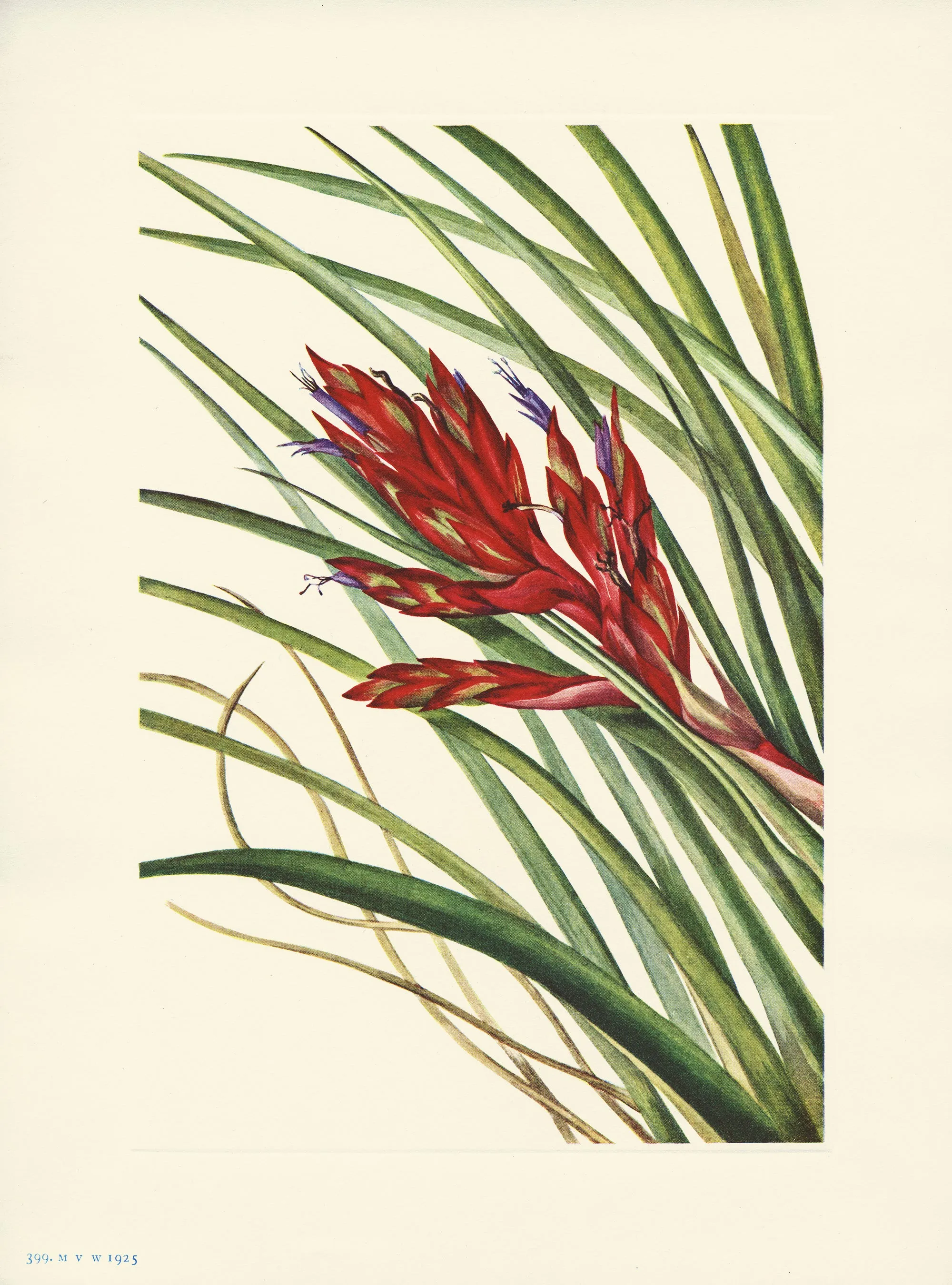Tillandsia fasciculata Swartz In motoring from lower Virginia southward, the ever increasing abundance of epiphytic plants is striking. In southern Virginia, Spanish moss frequently drapes the trees, especially the bald cypress. Farther down the coast other species of the Pineapple Family make their ap- pearance, and in Florida a number of different kinds are native. In some of the hammocks there, all the branches of the trees and even the bark of the trunk, serve for the attachment of bromeliads, orchids, and ferns, and the epiphytic plants are represented by many different species. In such a hammock a short distance north of West Palm Beach, Florida, the specimen here illustrated was obtained. The tillandsia usually dies after flowering, but its minute seeds, with their tufts of silky hairs, are scattered by the winds. The leaves of these plants are dilated at the base, thus forming a series of pockets which catch and hold water. Vegetable debris, as well as atmospheric dust, falls into the water and the plant absorbs the products of its de- cay, thus obtaining much of its nourishment. Quill-leaf tillandsia ranges from southern Florida south through the West Indies, and is widely distributed in other parts of tropical America.
We produce all of our on images in shop, and we are happy to offer custom work to our customers. Please inquire for pricing and options.












